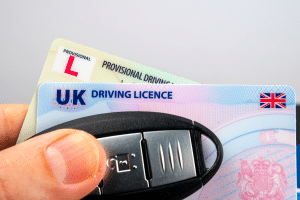The most normal and common procedure, moving off is something that we do very often in every trip we take in our vehicles. Ranging from the typical forward manoeuvre to moving off from more complicated angles around stationary structures, moving off can cause a lack of confidence and nervousness for any new or experienced driver. Because of the feeling of paranoia many drivers encounter, they either rush or fail to practise this manoeuvre, meaning they have the tendency to make mistakes all throughout their driving career. Given that this is a basic technique that really just requires proper protocol, practise, and a bit of confidence, moving off is a skill set that every driver really should strive to master.
When beginning all move offs, it is essential to always carry out basic safety checks of the vehicle; this means that the handbrake is engaged, the car is in neutral, and the engine is running. Start by pressing and holding in the clutch of the vehicle with the left foot. It is always advised to put the car into first gear because this is a more powerful option that will ensure the vehicle moves more efficiently. Once the car is in first gear, lightly step on and hold the accelerator with the right foot, with the heaviness of the foot pressure being contingent on outside factors like the type of road, the demand of how quickly the move off needs to be, and the accelerating power of the car. As drivers get more experience and confidence with driving, it will always be the better option that they hold the pedals of the car steady as they move off, with this being easily achieved by placing the heels of the feet on the floorboard to balance against the pedals properly. As the driver keeps inching forward, they must slowly and steadily allow the clutch to rise to the ‘biting point’ while maintaining complete stillness with the other foot. They may feel alarm as the engine noise will typically fall and the front of the car will rise up, but this is what they are after.
When it comes to moving off at an angle from behind all types of obstructions, the procedure that the driver is meant to follow is practically the same as what is previously described, but they are forced to consider what angle is best to get their car out the safest. Depending upon the distance between the driver’s car and the obstruction, it is always necessary for the driver to consider whether it is better for them to continue forward or put their car in reverse, the closeness of the other car, the oncoming traffic, and the speed at which they must accelerate to meet the same speed as the flowing traffic.
One of the most frightening techniques for drivers to master is moving off up hills because there is always the possibility they can roll backwards. It is essential that drivers learn to coordinate their pedals. While this is very similar to moving off on the level, there are two major differences: the driver will be required to accelerate more and the clutch will need to be raised slightly higher than the ‘biting point.’ When raising the clutch, it can make the car shake, but if this happens then just push the clutch back in and start over. This is the point where drivers tend to panic, but it is important to stay calm. Moving off up hills properly means at this point the driver must hold the brake still so that the vehicle can’t move forward until the driver has made sure it is safe to do so. Raise the clutch to the biting point, conduct observation checks, and lastly control the accelerating pedal with the right foot to move forward. Moving off downhill is always going to be easier because the driver has the weight of the car assisting them to go forward. The driver should be paying attention to the car so that it can’t go to quickly. The best way to achieve this is to put the clutch in entirely, place the car in the best gear for the steepness of the drive, press down the footbrake, and let the handbrake go.
Time and practise will teach all drivers what to look for, with inconsistency and rushing causing drivers to stall their car. It is always important for drivers to be aware of their surroundings, looking about them in a very regimented order. Before taking off, it is advised that drivers start by checking their left shoulder, left door mirror, forward, their interior mirror, right door mirror, and lastly their blind spot. Drivers should be on the look out for pedestrians, bikers, other vehicles, or any type of possible precaution. With every type of moving off the driver engages in daily, it is important to always consider observation and safety checks of their surroundings before committing to any moving off manoeuvre.
If you’ve found this blog post useful, but want some more information – feel free to contact us or look on the official government website for the guidelines to moving off.



